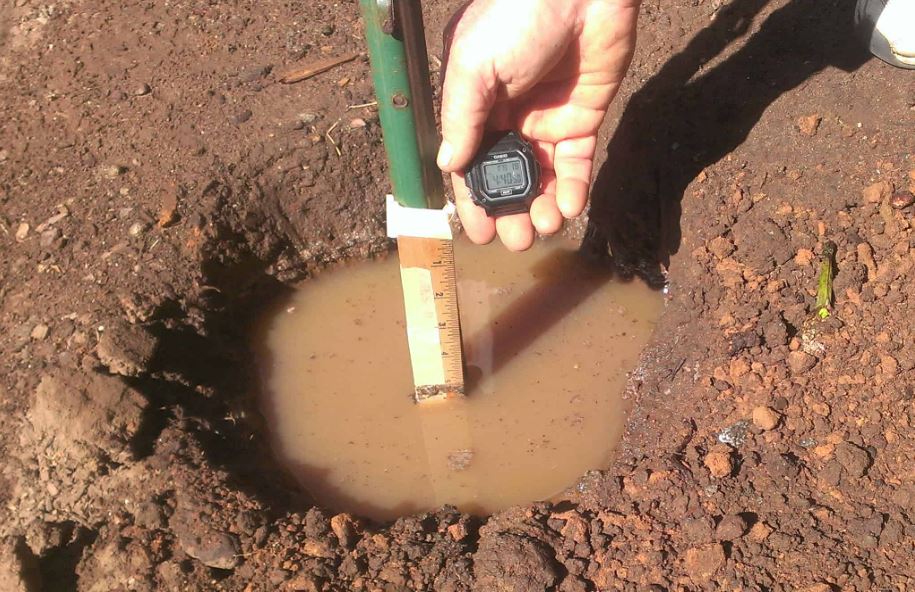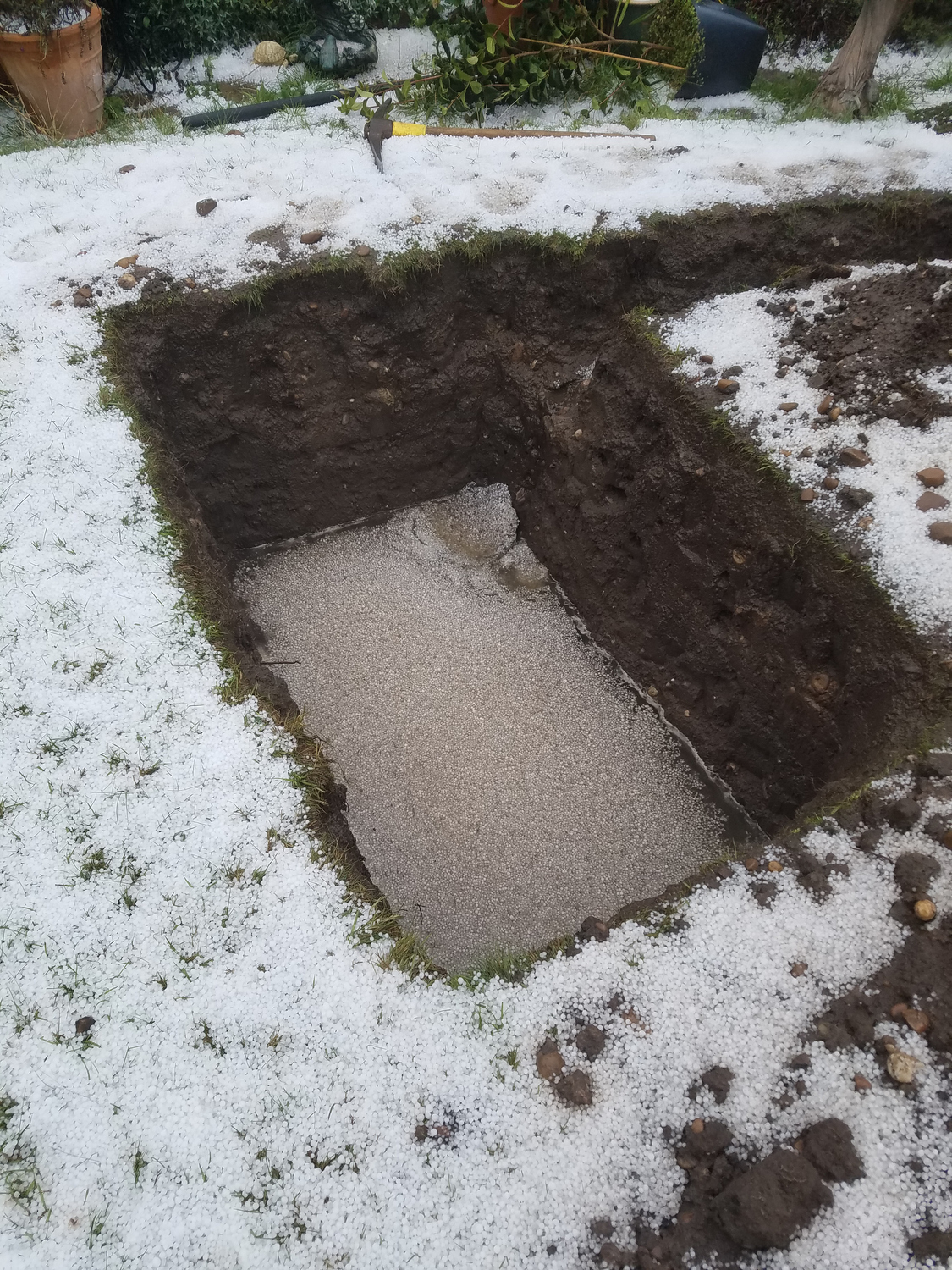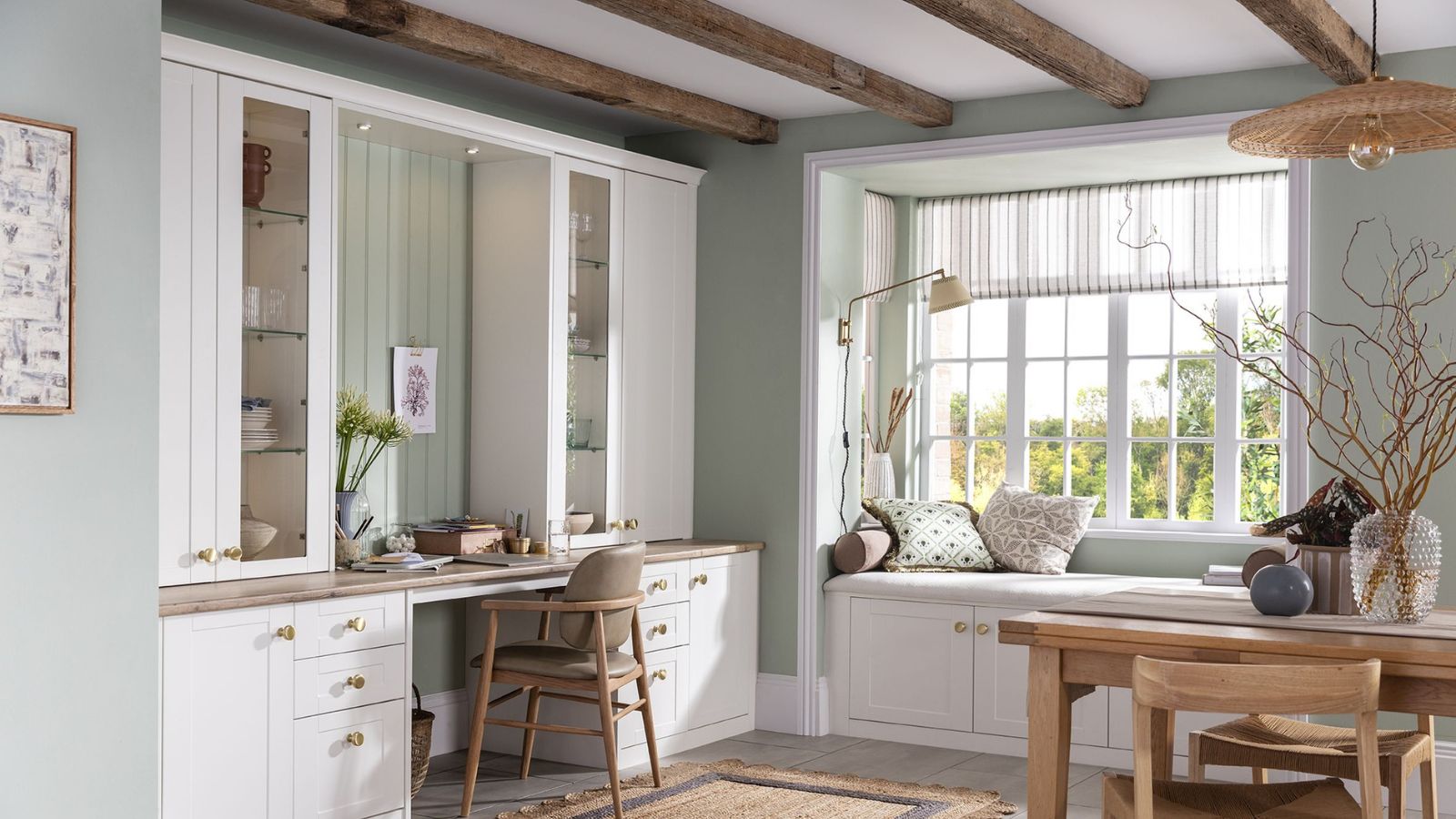What is a percolation test? Plus, how one should be done for your drainage project

Those wondering 'what is a percolation test' are likely to be in the process of investigating whether they can put in a soakaway or a septic tank.
Soakaways in particular are growing in popularity as they help drain land and gardens naturally and can be added to a garden or underneath a driveway and easily covered over so you wouldn't know it was there.
But, before these drainage systems can be installed, the soil needs to be checked to make sure it is absorbent enough to be able to safely disperse excess water, which is where a percolation test comes in.
Here we first answer the question: 'What is a percolation test?' before taking a dive into exactly how the experts carry out a percolation test to see if soil is suitable for a natural drainage installation.
What is a percolation test?
A percolation test determines how quickly your soil absorbs and disperses water. It is a vital step to take before installing soakaways or septic tanks and in its most basic form involves digging a hole or series of holes near where you want to position your drainage system and filling it with water. You then time how long the water takes to drain and this gives you an idea of how absorbent the soil is.
A percolation test is essential before installing a soakaway because if the soil is not absorbent – for instance if it is heavy clay – the soakaway will not be effective. This is because the way a soakaway works is that it is a hole dug into the ground, filled with a material such as rubble or an attenuation crate, which allows surface water the extra soil surface area to percolate back into the earth. You can read about them in more depth in our 'what is a soakaway' explainer.
Meanwhile a percolation test is also essential before installing a septic tank too. Septic tanks are an underground watertight container made of fibre glass, plastic or concrete and rely on the subsoil being capable of receiving the treated wastewater without backing up and preventing the unit from working. You can read more about 'what is a septic tank' in our separate guide.
Bring your dream home to life with expert advice, how to guides and design inspiration. Sign up for our newsletter and get two free tickets to a Homebuilding & Renovating Show near you.
However, as JD Pipes in Longtown, Carlisle, notes: "Surface water soakaway crate systems must handle a larger volume of water in a shorter period of time, meaning that, while the test itself may be the same [as for when installing a septic tank], the calculations of suitability may differ."
It is worth noting that percolation tests are different to drainage surveys, where a surveyor will use a CCTV camera to investigate your drainage pipes and identify any potential issues, such as blockages and fractures.

What is BRE365?
BRE 365 (from the BRE Digest 365) is the design and construction standard for rainwater soakaways, including the recognised method for the infiltration testing of soil (percolation test). Put simply, it shows the water absorption rate of the soil being examined.
Soakaways must be able to show that water stored within it drains quickly enough so that it can still provide the necessary run-off support for subsequent torrential rainfall.
When should you do a percolation test?
To ensure your soakaway satisfies building control and Environment Agency regulations, a percolation test is necessary. Without it, you can’t check the suitability of the ground or work out an effective soakaway design.
The percolation test is one of three mandatory tests to determine if a new or replacement soakaway can be installed. You must also do the Groundwater Source Protection Zone search, which ensures groundwater is not being contaminated. This is important because groundwater provides a third of the drinking water in England and Wales.
The Trial Site Assessment Hole determines the highest level of the water table and is essential because if the groundwater is too high, there is not enough unsaturated soil under the soakaway pipe to soak the effluent away. This means the tank will fill very quickly.
Percolation tests shouldn’t be carried out during extreme weather conditions such as heavy frosts, excessive rainfalls or droughts as you won’t get accurate or useful results.
How to do a percolation test?
The test is comprised of a trial pit being excavated in the proposed spot, then filled with water and the drainage time calculated.
It worth knowing the process, but in reality you are probably best off getting a specialist to conduct the percolation test as there's a fair amount of mathematical calculations needed that you wouldn't want to get wrong.
1) First dig a trial pit close to where you wish to put the soakaway
"Excavate a soakage trial pit to the same depth as anticipated in the full-size soakaway," the BRE Digest 365 explains. "For run-off from 100m2 this will be 1 to 1.5 m below the invert level of the drain discharging to the soakaway.
"Overall depths of excavation will be typically 1.5 to 2.5 m for permeable areas up to 100m2draining to the soakaway. The trial pit should be 0.3 to 1 m wide and 1 to 3 m long. It should have vertical sides trimmed square and, if necessary for stability, should be filled with granular material."
2) Measure up your trial pit
BRE Digest 365 explains that narrow, short pits will use less water but can be difficult to prepare. It also points out an important bit of safety advice in that you shouldn't ever enter the pit.
3) Prepare to fill the pit with water
The BRE Digest 365 says it might be a good idea to have the quantity of water needed on hand in a water butt or bowser (depending on how big your pit is) so you can fill the pit several times, quickly. You need to also make sure the pit doesn't collapse as you add the water.
4) Time the drainage rate
Record both the water level and the time it takes for the hole to empty. You should repeat this test three times and record the information each time. These fillings should be on the same day or days close together.
5) Make your calculations
This is the tricky bit, where a little mathematical prowess might be needed.
The calculation can be found here on page 3.
6) Work out your soil infiltration rate
There are more mathematical calculations to consider to get your soil infiltration rate (available to see on that same link) but to give you a general idea, BRE Digest 365 says: "The soakaway should discharge from full to half-volume within 24 hours in readiness for subsequent storm inflow."
Can I do a percolation test myself?
Although it’s physically possible to do a percolation test yourself, it’s best to hire a specialist company to do it for you. As we have seen above, the pit size and calculation formulas are very specific and a specialist will have the kit and the knowhow to make sure it’s done correctly so you understand what size soakaway you need as well as if your soil is suitable for one.
And remember, if you have a soakaway or any other kind of drainage that doesn’t flow into mains sewers, you may be eligible for a surface water drainage rebate.
Those of us who live in homes that don’t rely on public drains may be paying a fee unnecessarily.You can apply for a rebate if you don't think there's any water going from where you live to a public drain.
Sam is based in Coventry and has been a news reporter for nearly 20 years. His work has featured in the Mirror, The Sun, MailOnline, the Independent, and news outlets throughout the world. As a copywriter, he has written for clients as diverse as Saint-Gobain, Michelin, Halfords Autocentre, Great British Heating, and Irwin Industrial Tools. During the pandemic, he converted a van into a mini-camper and is currently planning to convert his shed into an office and Star Wars shrine.

